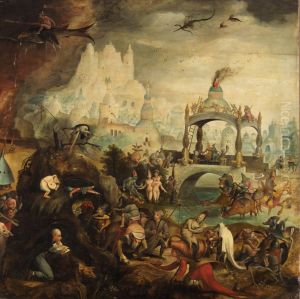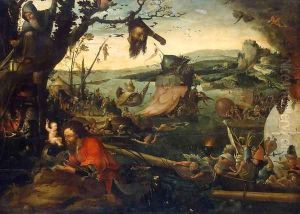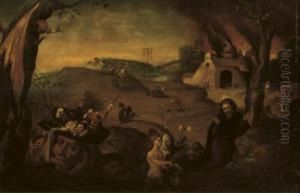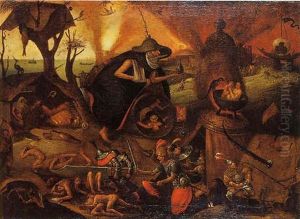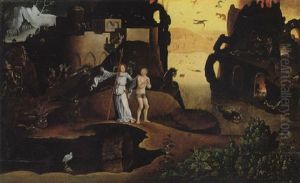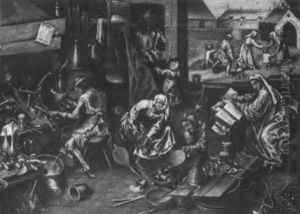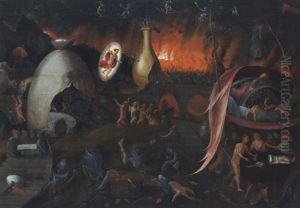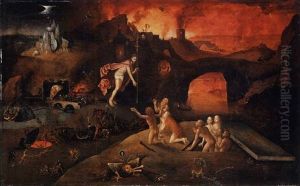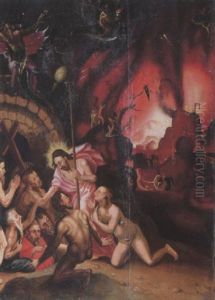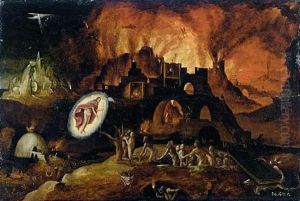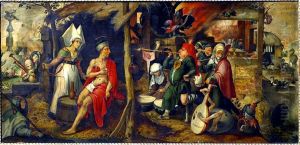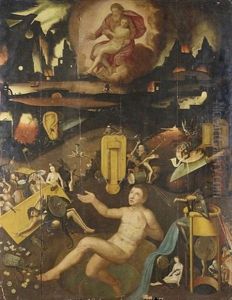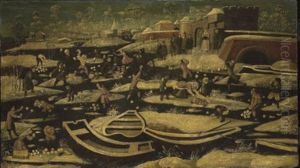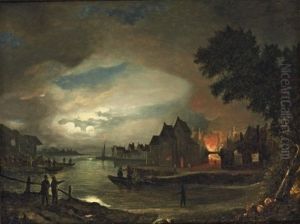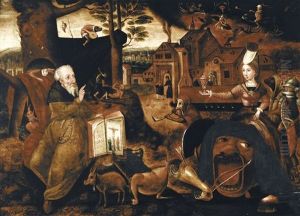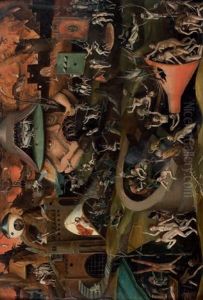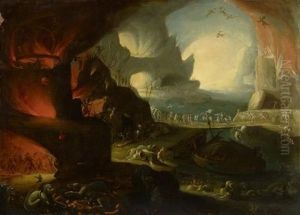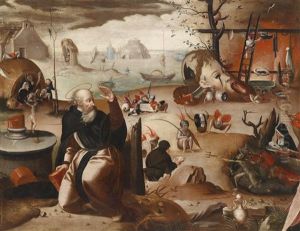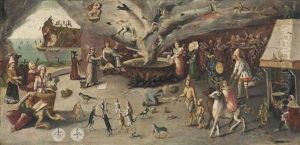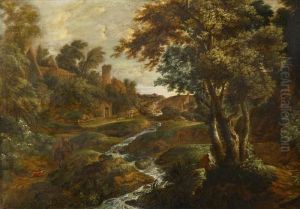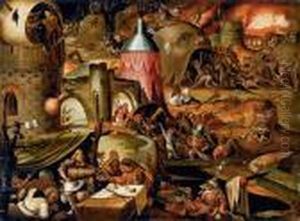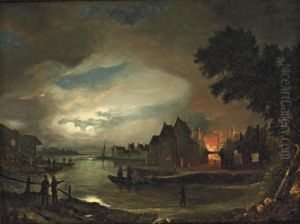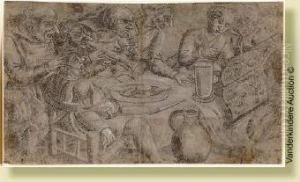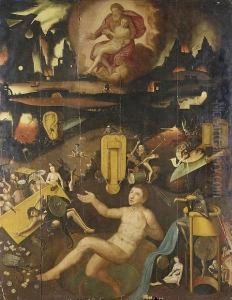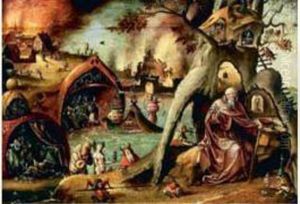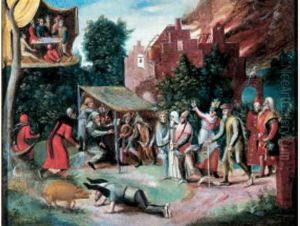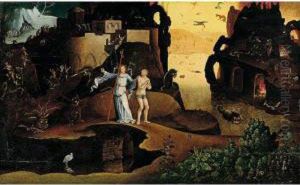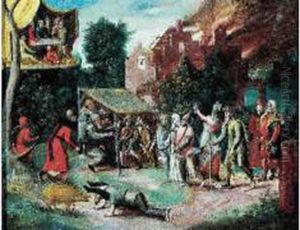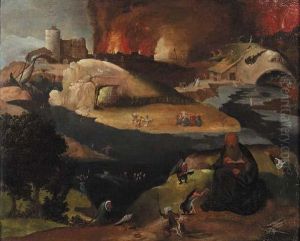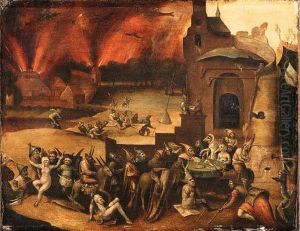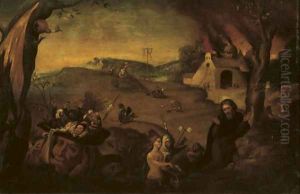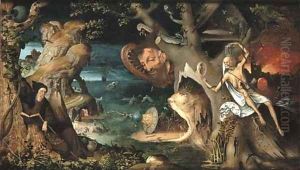Jan Mandijn Paintings
Jan Mandijn (or Mandyn) was a notable figure in the Northern Renaissance, born around 1500, in either Haarlem or Leiden in the Netherlands. His exact birthplace remains a subject of scholarly debate, reflecting the scant biographical details available about his life. Mandijn is best known for his intricate and often fantastical paintings, which exhibit a strong influence from Hieronymus Bosch, one of the most innovative artists of the late 15th and early 16th centuries.
Mandijn's work is characterized by its detailed landscapes filled with bizarre and grotesque figures, demonstrating his fascination with Bosch's surreal and moralistic themes. Despite the apparent influence, Mandijn developed his unique style, integrating humorous and satirical elements into his compositions. His paintings often depicted scenes of folly and human vice, drawing attention to the moral degeneration of society through allegorical and sometimes enigmatic imagery.
The artist spent a significant part of his career in Antwerp, a bustling hub for the arts in the 16th century. It was there that Mandijn became a master in the Guild of St. Luke in 1530, indicating his recognition and standing among his contemporaries. His time in Antwerp was productive, and he contributed to the city's artistic legacy, influencing fellow artists with his imaginative approach to painting.
Despite his contributions to the Northern Renaissance and the distinctive quality of his work, Jan Mandijn did not achieve the same level of fame as Hieronymus Bosch. However, his paintings continued to be appreciated for their creativity and complexity. Today, Mandijn's work is held in various collections worldwide, offering insight into the period's artistic innovations and the enduring appeal of Bosch's influence.
Mandijn's death in 1560 marked the end of a career that had seen the blend of fantastical imagery with sharp social commentary. His legacy, though overshadowed by his more famous contemporaries, remains significant for art historians and enthusiasts who value the depth and eccentricity of Northern Renaissance art. Jan Mandijn's contributions highlight the rich tapestry of 16th-century European art, emphasizing the era's capacity for creativity and critical reflection.
